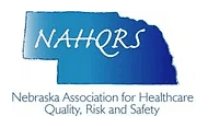The novel coronavirus disease 2019 (COVID-19) pandemic poses daily challenges to the healthcare delivery system that have implications for patient safety. The World Health Organization, the Centers for Disease Control and Prevention, and the Agency for Healthcare Research and Quality provide guidance for clinical management of COVID-19 (1,2,3). This article summarizes several patient safety risks and proposed mitigation strategies associated with COVID-19.
Risks Associated with Care of COVID-19 Patients
Persons age 60 and older represent a large proportion of those hospitalized with COVID-19 (4,5,6). Hospitalized COVID-19 patients transferred to intensive care units (ICUs) tend to be older and have more comorbidities than those with COVID-19 who are not hospitalized (4,5,6). Comorbidities associated with severe COVID-19 cases include hypertension, diabetes, cardiovascular disease, chronic obstructive pulmonary disease, obesity, and cerebrovascular disease (4,5,6,7). The CDC recommendations include supportive care to relieve symptoms, with support of vital organ functions in severe COVID-19 cases (2). Secondary prevention and care of general complications should focus on reducing the incidence of pressure injuries, falls, catheter-related bloodstream infection, venous thromboembolism, and delirium; with measures adapted to comorbidities, polypharmacy, and frailty of older adults (4).
Pressure Injury
Care of patients in the ICU requires medical devices and equipment associated with device related pressure ulcers (DRPUs) including endotracheal tubes and tube fixators, nasogastric tubes, oxygen saturation probes, temperature probes, and arterial lines.8 Severe COVID-19 cases require mechanical ventilation to control the airway (9,10). Prone positioning is likely to reduce mortality among mechanically ventilated patients when applied for at least 12 hours daily. However, this position increases the risk of DRPUs in the facial area (9). Frequent mobilization9 and the application of prophylactic dressings under stiff devices have been shown to reduce the risk of DRPUs, and remove trapped heat away from the skin to lessen perspiration and the related risk of skin irritation and maceration (8).
Falls
COVID-19 patients may require prolonged intensive care and mechanical ventilation (11). Prolonged ICU stays increase the risk of post intensive care syndrome (PICS) (11,12). Although the actual cause is unknown, PICS may be related to sedative medications or hypoxia (11). PICS can result in multiple impairments that increase a patient’s risk of falling (12). Cognitive and psychiatric impairments include deficits in memory, attention, and visuo-spatial processing as well as depression, impulsivity, and anxiety. Psychomotor impairments include muscle weakness and severe fatigue. Avoiding or limiting use of sedatives, neuromuscular blockers, and corticosteroids can help control the risk of PICS, as can early rehabilitation and mobilization with physical therapy (11,12). Additionally, allowing patients to connect with family through the use of technology (e.g., Facetime) can enable family members to provide consistent reorientation to help lessen the effects of the ICU stay and mitigate the risk of developing PICS (11).
Mental Health
The negative consequences of social isolation, physical distancing, fear of contracting the disease, and financial stress related to loss of employment will likely have adverse effects on people with mental illness and on population mental health in general (13). Stigma toward individuals with COVID-19 and their families places them at increased suicide risk. Concerns that suicide rates will rise require urgent attention and careful monitoring by mental health providers now, and likely well after the pandemic has ended, to ensure patients receive the resources they need for effective suicide prevention (13).
Human Factors
Care of COVID-19 patients has disrupted normal workflows by shifting staff assignments and modifying unit layout to accommodate the influx of patients (14). From a human factors perspective, whenever workflows are disrupted or people are doing tasks they do not usually do, there is a higher risk to patient safety. According to the Agency for Healthcare Research & Quality, these risks are exacerbated by “fatigue and burnout, absence of team trust, lack of time for self-care, and poor psychological safety”(3). Strategies to address these issues include:
- Improve workplace conditions and encourage help-seeking;
- Conduct frequent huddles, de-briefs, and use checklists to promote effective communication;
- Ensure team members have breaks, food, and hydration when needed;
- Establish a culture of safety that attends to staff psychological well-being and safety (e.g., adequate PPE).(3).
Delays in Preventive Care
The goal of “flattening the curve” to ensure hospitals can manage the surge in patient care created delays in preventive care, non-life threatening diagnostic procedures, treatments, and elective surgeries. These delays allowed reassignment of staff and increased availability of ventilators and other equipment/supplies for COVID-19 patients (15). However, the consequences of these delays may affect the quality and length of life and the cost of care. Delays in cancer screening and diagnosis may cause progression of undetected disease (15). Delays in cardiac care, especially diagnostic, interventional or surgical procedures scheduled prior to the pandemic, have created anxiety among patients who may delay seeking care because they are unsure “their symptoms are severe enough to burden the healthcare system” (16). Telemedicine technologies have helped to restore preventive care as society and healthcare delivery slowly begin to open to normal operations (16,17). Telemedicine promotes continuity of care, decreases costs, improves patient self-management and ensures provider safety by reducing their direct contact with patients (17).
References
- WHO. Advice on the use of masks in the community, during home care and in health care settings in the context of the novel coronavirus (2019-nCoV)outbreak: Interim Guidance. 2020. https://www.who.int/docs/default-source/documents/advice-on-the-use-of-masks-2019-ncov.pdf
- Centers for Disease Control and Prevention. 2019-nCoV: Prevention & Treatment. (2020). https://www.cdc.gov/coronavirus/2019-ncov/about/prevention-treatment.html
- Agency for Healthcare Research & Quality. (May 2020). COVID-19: Team and human factors to improve safety. Patient Safety Primer. Accessed from: https://psnet.ahrq.gov/primer/covid-19-team-and-human-factors-improve-safety
- Garnier-Crussard, A., Forestier, E., Gilbert, T., Krolak-Salmon, P. Novel coronavirus (COVID-19) epidemic: What are the risks for older patients? J Am Geriatr Soc. 2020, http://dx.doi.org/10.1111/jgs.16407
- Wang, B., Li, R., Lu, Z, & Huang, Y. (2020). Does comorbidity increase the risk of patients with COVID-19: Evidence from meta-analysis. Aging; 12(7): 6049-6057.
- Goyal, P., Choi, J., Pinheiro, L., Schenck, E., Chen, R., et al. (June 11, 2020). Clinical characteristics of Covid-19 in New York City. New England Jnl Med, 382;24.
- Wang D, Hu B, Hu C, et al. (2020). Clinical characteristics of 138 hospitalized patients with 2019 novel coronavirus–infected pneumonia in Wuhan, China. JAMA. https://jamanetwork.com/journals/jama/fullarticle/2761044
- Gefen, A., & Ousey, K. (2020). Update to device-related pressure ulcers: SECURE prevention. Journal of wound care; 29(5): 245-259.
- Zingarelli, E.M., Ghiglione, M., Pesce, M., Orejuela, I., Scarrone, S., Panizza, R. (2020). Facial pressure ulcers in a COVID-19 50-year-old female intubated patient. Indian J Plast Surg; 53:144–146.
- Richardson, S., Hirsch, J.S., Narasimhan, M., Crawford, J.M., McGinn, T. et al. (2020). Presenting characteristics, comorbidities, and outcomes among 5700 patients hospitalized with COVID-19 in the New York City area. JAMA; 323(20): 2052-2059. doi:10.1001/jama.2020.6775
- Edwards E. ‘Post intensive-care syndrome’: Why some COVID-19 patients may face problems even after recovery People who remain in the ICU for weeks may end up with memory problems and trouble thinking clearly. [Internet]. 2020 Mar [cited 2020 Apr 9]. Available from: https://www. nbcnews.com/health/health-news/post-intensive-caresyndrome-why-some-COVID-19-patients-may-n1166611
- Henk, J., Stucki, G., Bickenbach, J. (2020). COVID-19 and post intensive care syndrome: A call for action. J Rehabil Med 2020; 52: jrm00044
- Gunnell, D., Appleby, L., Arensman, E., Hawton, K,, John, A., Kapur, N., Khan, M., O'Connor, R.C., & Pirkis, J.; COVID-19 Suicide Prevention Research Collaboration. (2020). Suicide risk and prevention during the COVID-19 pandemic. Lancet Psychiatry. Apr 21. doi: 10.1016/S2215-0366(20)30171-1
- Jaarsma, T, van der Wal, M., Hinterbuchner, L., Köberich, S., Lie I., & Strömberg, A. (2020). Flexibility and safety in times of coronavirus disease 2019 (COVID-19): Implications for nurses and allied professionals in cardiology. European Journal of Cardiovascular Nursing: 1-3. https://doi.org/10.1177/1474515120921027
- Spinelli, A., & Pellino, G. (2020). COVID-19 pandemic: Perspectives on an unfolding crisis. [Online] British Journal of Surgery. DOI: 10.1002/bjs.11627.
- Pelicioni, P., Lord, S. (2020). COVID-19 will severely impact older people’s lives, and in many more ways than you think! Brazilian Journal of Physical Therapy. https://doi.org/10.1016/j.bjpt.2020.04.005
- Sikka, N., Willis, J., Fitall, E., Hall, K. (2020). Telehealth and patient safety during the COVID-19 response. Accessed from: https://psnet.ahrq.gov/perspective/telehealth-and-patient-safety-during-covid-19-response







